Digital Agriculture
Digital Agriculture Cycle
The various stages during the production cycle, such as agricultural planning, execution and monitoring, generate data, which is transformed into agronomic information, analysis and recommendations. The main stages are soil correction, sowing, crop treatment and harvest.
At SLC Agrícola, Digital Agriculture consists of four elements:
– Precision Agriculture;
– Automation and New Technologies;
– Agricultural Management Systems;
– Agricultural Intelligence Center.
Precision Agriculture
Rational management of inputs and resources
Monitoring fields and plants using precision agricultural tools enables the company to analyze different layers of data, such as soil fertility maps, vegetation indices and yield maps. These tools enable us to manage inputs and resources rationally in order to reduce the cost of production, improve yield and reduce the environmental impact.
The technologies employed in agricultural machines, combined with the planning of georeferenced operations, improve operational efficiency and reduce waste.
Variable Rate of Inputs
Fertilizers, crop protection products and seeds can be applied at variable rates considering the different locations.

Management Zone
Thanks to improved temporal resolution of information from yield maps, fertility maps, granulometry and other information, it is possible to identify regions with production stability and thus define Management Zones to guide soil sampling, prescribe inputs or divide the fields.

Operational Geographic Planning
The main agricultural operations, such as sowing and application of chemicals, are planned with the best operational routes considering the criteria of agronomic efficiency and quality. These help reduce the crushing of plants and maneuvering time, control machine traffic and, especially, reduce input losses due to overlapping.
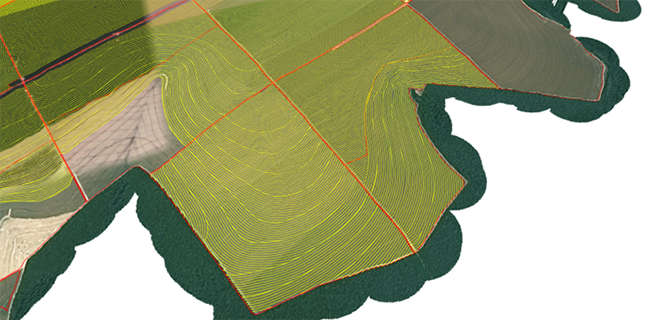
Benefits of Precision Agriculture:
- Identification of problems in fields;
- Rational management of inputs;
- Increased yield;
- Higher quality of products.
Automation and New Technologies
Tests, Deployment and Evolution of Technology
Remote Sensing – Satellite
The use of satellite images enables the generation of vegetation indices which, when correctly interpreted, can optimize agronomic prescription. This technology enables the application of growth regulators, ripeners and defoliants in cotton crops and helps identify issues such as crop mismanagement or root-knot nematodes.

Remote Sensing – Drone
Images obtained by drones have many practical uses, the most common being the mapping of resistant or perennial weeds for application of herbicides in accordance with the infestation map.
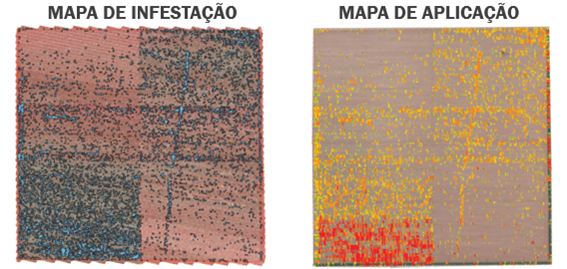
Localized Application
In georeferenced pest monitoring, it is possible to identify locations where infestation is above the control level and make a localized application of insecticide in an optimized manner. This practice enables a reduction over 5% in the use of chemicals.

Selective Application
Through sensors installed in sprayers, weeds are identified, and the equipment that applies herbicides is activated in real time. This type of application helps reduce the volume to be applied in the field.
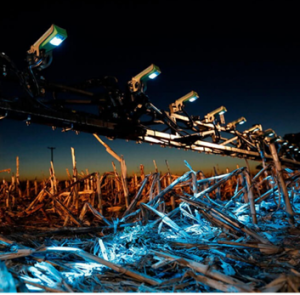
Climate Management
The use of meteorological stations and radars enables automatic data collection, generation of rain maps and correlation of climate variables with operations. Another factor is more accurate forecasting of each microclimate in the farm, which guides operational decisions in the fields.
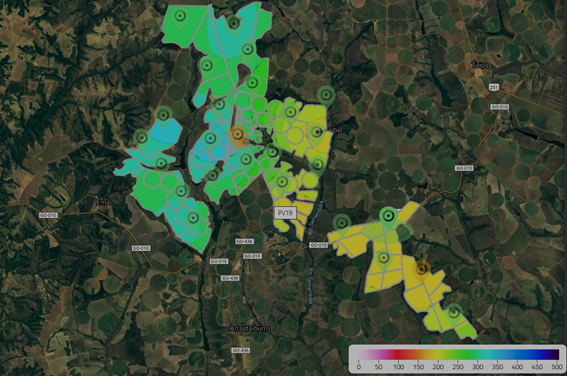
Agricultural Management Systems
Production Planning and Management
The cycle of soybean, corn and cotton crops requires agricultural planning based on historical data for the correct planning of crop rotation, inputs, labor, machinery and operations, while always observing climate variables as well as production costs and estimates.
All the data is input in software and apps for governance and for agility of processes and information, as well as for visual management at the Agricultural Intelligence Center.
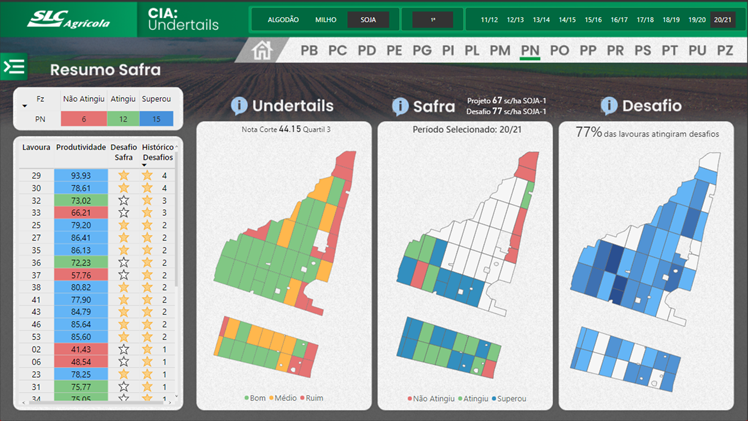
Agricultural Intelligence Center
Improved operational efficiency
The Agricultural Intelligence Center consolidates the data transmitted or collected in order to monitor the production indicators. Investments in technology require people training, guidance for the continuous improvement of processes and changes in the decision-making process based on data.
Each of our farms has professionals working directly in support, training, monitoring, analysis and the continuous improvement of processes.
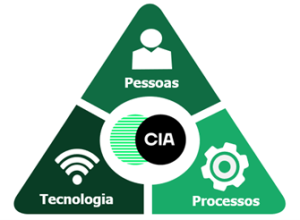
Management of Indicators
The data collected is organized into snapshots at different levels: operational, tactical and strategic. The indicators enable online management via monitoring of alerts, targets and results.

Operational Quality Management
Operations involving the application of inputs, sowing and management are validated according to the agricultural plan, comparing the planned dose with the dose applied, meteorological conditions at the time of application, overlapping and possible failures that may occur.
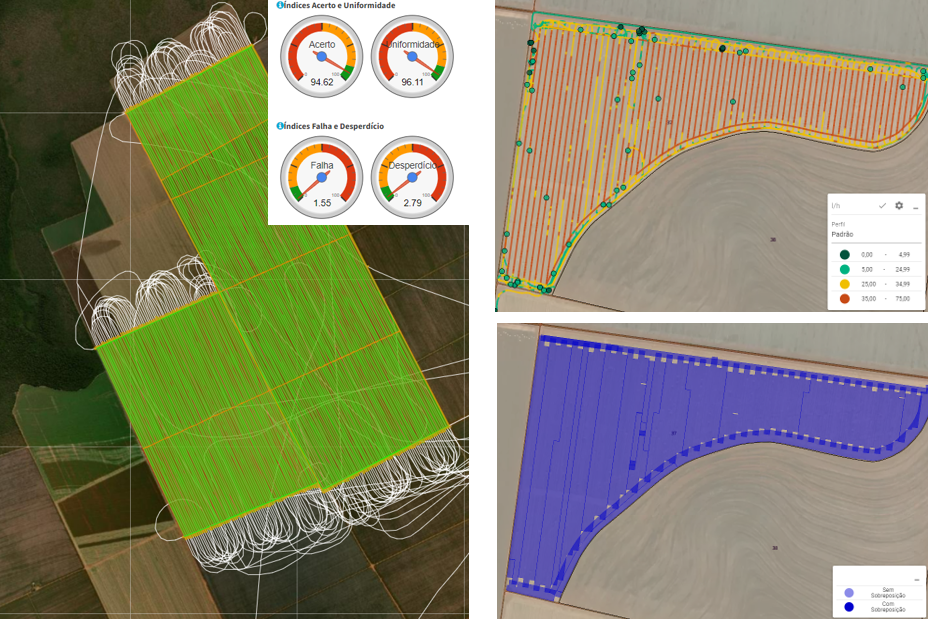
Measurement of results
Technology is part of SLC Agrícola’s strategy and is currently considered the game changer in terms of competitiveness. Measuring results enables us to identify technologies with the best financial returns. In 2022, each R$1.00 invested led to a reduction in cost by more than R$5.00.
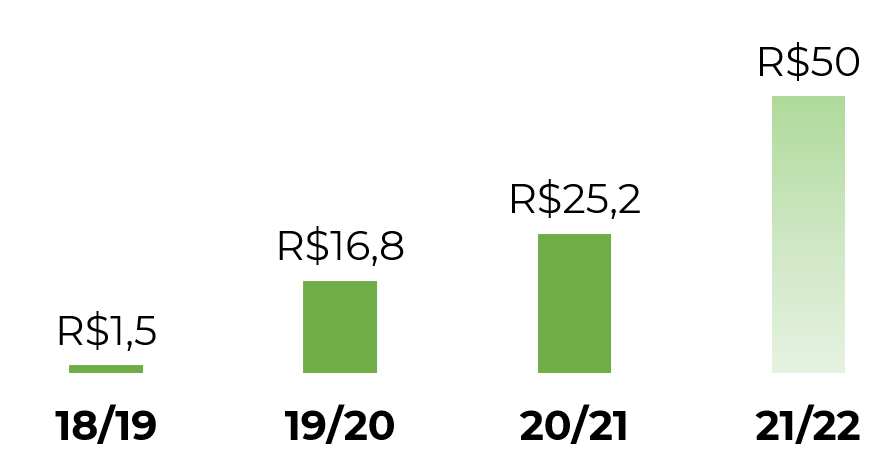
Net Gain from the use of new* technologies (R$ million)
Another clear benefit is the reduction of environmental impact, thanks to the lower volume of active ingredients of agricultural chemicals, as well as a reduction in water consumption and input packaging.
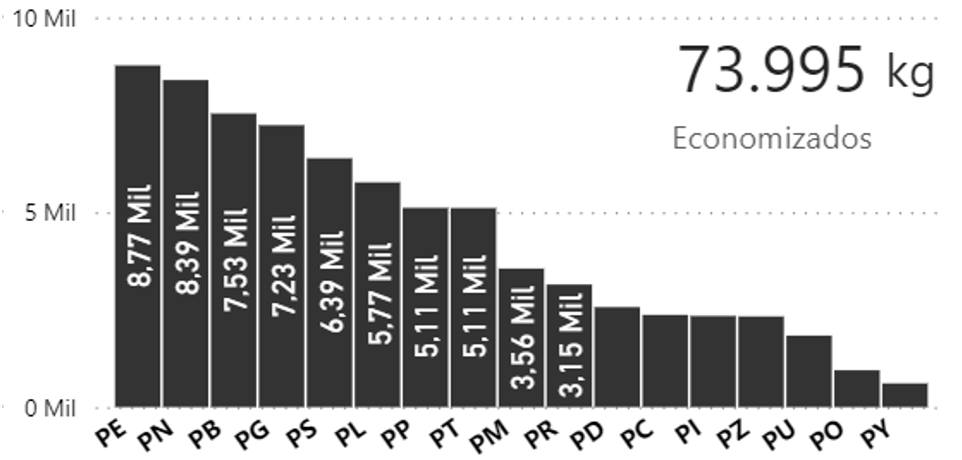
Redução do uso de plástico derivado da otimização do uso de tecnologias